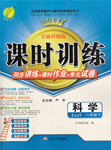题目内容
【题目】C
Shakespeare City Walk
This 90-minute leisurely walking tour does not go to the Globe Theatre (because everyone already knows it) , but instead uncovers less known monuments and locations in the City of London with connections to Shakespeare’s life, his friends, his loves and his work.
The Shakespeare City Walk takes place on Fridays at 11 a.m. at Temple tube station.
Address: Meet at Temple tube station, London
Telephone: +44(0)790 5746733
Camera Walk
Learn how to take better photos as you explore London with a professional photographer on a Camera Trails tour. Walk around Brick Lane and Spitalfields on the Urban East tour, or take photos of Big Ben and St Paul’s Cathedral on the South Bank tour.
Address: Trafalgar Square, London
Telephone: +44(0)798 957 9336
The Celebrity Planet
See celebrity (名人) homes, famous film locations, music landmarks and places linked to pop history on a Celebrity Planet tour. Find out about stars in Notting Hill, Mayfair, Primrose Hill or Chelsea, or try a Harry Potter, James Bond or Beatles tour.
Address: 40 Porchester Square, London
Telephone: +44(0)20 7193 8770
Email: info@thecelebrityplanet.com
Sandemans New London Tours
Sandemans New London Tours offer a completely free tour of Royal London, including the Changing of the Guard. There’s also an Old City of London Tour, and a Grim Reapers of London Tour. Our expert guides work for tips, you contribute to the pollution problem of London’s cars and buses.
Email: info@neweuropetours.com
【1】What is TRUE of the Shakespeare City Walk?
A. It takes place five days a week.
B. It consists of not so much famous destinations.
C. It lasts about half a day.
D. It includes a visit to a famous theatre.
【2】If you want to take some wonderful photos of Big Ben, you may _____.
A. receive some professional training
B. go to Temple tube station
C. join the Urban East tour
D. join the South Bank tour
【3】Sam is a movie fan. He will probably ______.
A. go to 40 Porchester Square
B. call +44(0)790 5746733
C. call +44(0)798 957 9336
D. email info@neweuropetours.com
【答案】
【1】B
【2】D
【3】A
【解析】试题分析: 本文介绍了Shakespeare城市漫步,带着摄像漫步,名人星球和Sandemans参观新伦敦的旅行。想参加的话,可以电话或者上网联系。
【1】B 细节理解题。根据This 90-minute leisurely walking tour does not go to the Globe Theatre (because everyone already knows it) 可知,在莎士比亚城市漫步的休闲旅行中,没有多少著名的景点,故选B。
【2】D细节理解题。根据or take photos of Big Ben and St Paul’s Cathedral on the South Bank tour.可知, 如果想拍一些关于大本钟的照片,应该参加南岸旅游。故选D。
【3】A 细节理解题。Sam是一个电影迷,根据The Celebrity Planet 的介绍可知,他应该去40 Porchester Square,打电话+44(0)20 7193 8770,发邮件info@thecelebrityplanet.com。所以选A。

 课时训练江苏人民出版社系列答案
课时训练江苏人民出版社系列答案 黄冈经典趣味课堂系列答案
黄冈经典趣味课堂系列答案